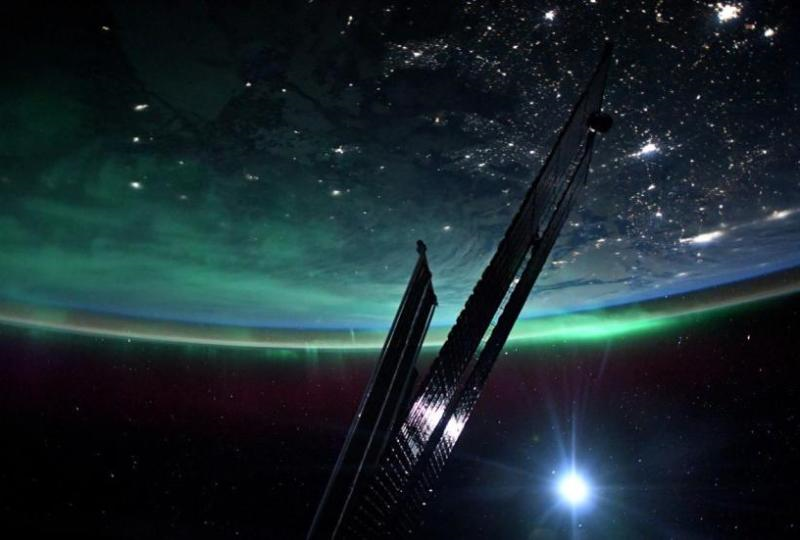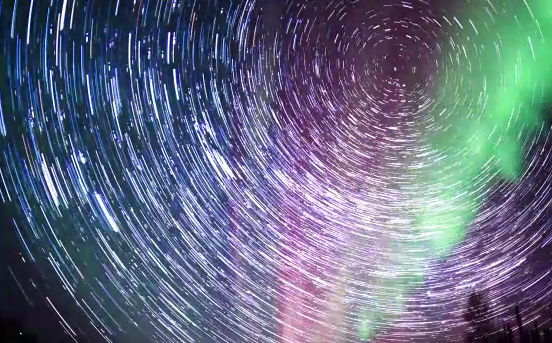Aurora Time: Difference between revisions
Siterunner (talk | contribs) No edit summary |
Siterunner (talk | contribs) No edit summary |
||
| Line 13: | Line 13: | ||
<big><big>'''Earth 360°'''</big></big> | |||
[[File:Aurora startime.png| link=http://pmdvod.nationalgeographic.com/NG_Video/77/34/Technicolour_ENCODE__174233.mp4]] | [[File:Aurora startime.png| link=http://pmdvod.nationalgeographic.com/NG_Video/77/34/Technicolour_ENCODE__174233.mp4]] | ||
Revision as of 14:46, 1 March 2023
Photo by NASA Astronaut Josh Cassada (Feb. 2023)
From the International Space Station
🌎
Earth 360°
From GreenPolicy360's Facebook page
Sublime, magnificent time lapse short film of northern aurora colors, particles from the sun intersecting w our planet's atmosphere, reminder of the thin layer (and it's very thin) protecting life on earth
http://pmdvod.nationalgeographic.com/NG_Video/77/34/Technicolour_ENCODE__174233.mp4
Video Courtesy of Alexis Coram
[play full-screen]
○ ○ ○ ○
Northern Lights ('Aurora borealis' in the north and 'Aurora Australis' in the south), a result of collisions between gaseous particles in the Earth’s atmosphere and charged particles released from the Sun’s atmosphere.
The different colours are attributed to different types of gas particles colliding; the most commonly occurring colour, a pale yellow/green, is created by oxygen molecules located about 60 miles above the earth. Nitrogen produces a blue, or purple/read aurora, and the elusively rare red aurora is created by high altitude oxygen.
🌎
- Additional Website Resources - Linked Data - Green Best Practices
- Anthropocene
- Atmospheric Science
- Earth
- Earth Imaging
- Earth Observations
- Earth Science from Space
- Earth360
- EarthPOV
- Eco-ethics
- Eco-Quotes
- Eco-Spirituality
- Ecology Studies
- Global Security
- Environmental Protection
- ESA
- GreenPolicy360
- Orbital Perspective
- Overview Effect
- Planet Citizen
- Planet Citizens
- NASA
- ThinBlueLayer
- Whole Earth

